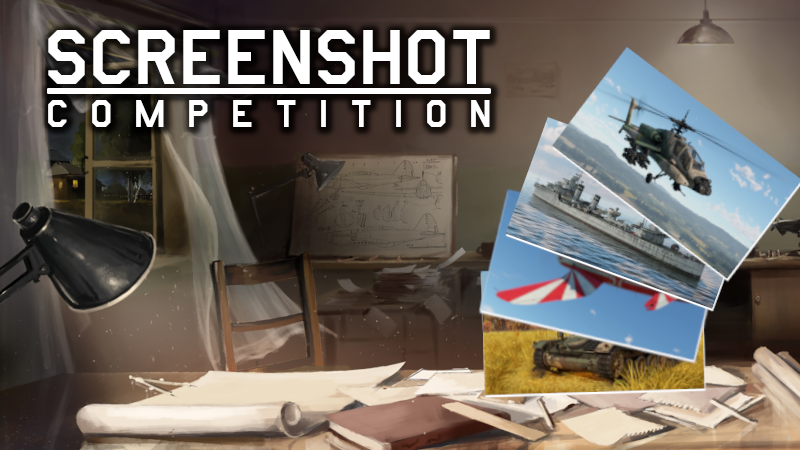Richelieu: The Last French Gunslinger

Today we’re taking a look at Richelieu, the lead ship of the last class of French battleships built during the 1930s in an effort to counter the latest capital ships of the Italian and German navies.
[h2]Richelieu: A Battleship for France at Rank VII[/h2]
At a glance:
- Powerful 380 mm main battery
- Excellent speed
- Vast secondary arsenal
- Strong armor protection
Richelieu was a French battleship laid down in 1935 and commissioned in 1940 as the lead ship of a new class of French battleships built in response to the naval buildup of Italy and Germany. Her design went to the limit imposed by the Washington naval treaty, featuring eight 380 mm (15‘‘) guns and a displacement of around 37,000 tons. The warship inherited a similar configuration to the preceding Dunkerque, an intentional design choice meant to save weight and reduce building time.
At the outbreak of the Second World war, Richelieu was still undergoing trials and rushed to Dakar to avoid falling into German hands during the 1940 armistice. In July 1940, British forces attacked Richelieu during Operation Catapult, damaging her to prevent her use by the Vichy regime. She remained at Dakar under Vichy control until 1942, when the Allied invasion of North Africa shifted political alignments. After joining the Free French, Richelieu was ferried over to the U.S. to undergo extensive refits. Richelieu was thereafter modernized with an improved radar, AA defenses, and American fire-control systems. Richelieu subsequently served with the British Eastern Fleet, escorting carriers and bombarding Japanese-held positions in the Indian Ocean and later supporting operations in Southeast Asia.
After the war, Richelieu represented French naval power during a transitional period, briefly supporting colonial operations before being placed in reserve. Technologically advanced for her time but soon rendered obsolete by air power and missile technology, she was decommissioned in 1968 and scrapped shortly after.

[h2]Introducing Richelieu![/h2]
In War Thunder, Richelieu will soon join the ranks of the French bluewater fleet as its next top bluewater warship. Representing a further developed and upscaled version of an unorthodox ship design first pioneered by the French by Dunkerque, Richelieu brings with it significant improvements to both firepower and protection, making for a highly potent warship, worthy of representing French naval power in top rank battles. Let’s dive in!


Although Richelieu and Dunkerque share many design principles, also reflected in their visual appearance, don’t mistake them for being identical! In fact, French shipbuilders merely based Richelieu off Dunkerque’s design while scaling the specifications up to match its counterparts of the day. The most prominent example of this can be observed in the ship’s main battery. Although retaining the two bow-mounted quadruple turret layout, these have been upgraded to 15’’ (380 mm) caliber, thus significantly improving their range and effectiveness against more heavily armored opponents. The secondary battery is also upgunned to nine 6’’ (152 mm) cannons, thus further improving the warship’s deadliness in gun duels. Coming to the game in its late war refit, Richelieu will also feature a substantially bolstered anti-air suite composed of a total of 56 x 40 mm and 48 x 20 mm cannons in addition to its original 12 x 100 mm long-range anti-air cannons.
Interesting: Richelieu stands out as the only French battleship to serve actively with both Vichy and Allied forces during the war.

In addition to a deadly arsenal, French ship builders didn’t omit including improvements to other aspects of the warship either. For instance, Richelieu’s belt armor was increased to 330 mm, allowing it to effectively shield the warship’s critical compartments and modules from high caliber enemy fire even at medium range engagements. Additionally, despite having a higher displacement than its predecessor, Richelieu also features a more powerful propulsion system which in turn allows the ship to reach a top speed of just over 32 kts (59 km/h). As a result, Richelieu is most capable of leading the charge together with its allies thanks to its superb combination of firepower, gun layout, mobility and protection — a true steel wedge to cut through the enemy lines!

That’s it for this one! Richelieu has set course for War Thunder naval battles and is due to arrive in the next major update. In the meantime, keep scanning the news section as we continue to release new info on the upcoming update. Until then, calm seas and good hunting captains!
Please note that this vehicle’s characteristics may be changed before it is added to the game.




















